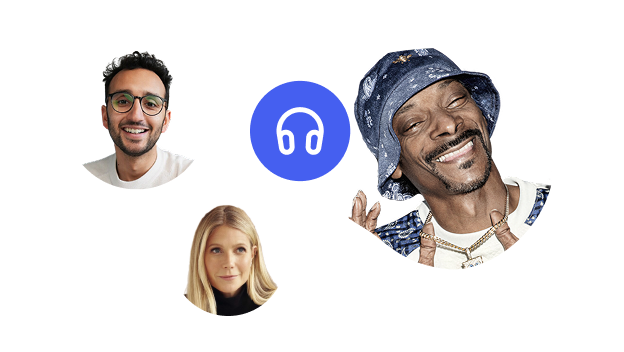Creating an AI voice is an intersection of several technological domains, involving deep learning, machine learning, audio processing, and more. This comprehensive guide will answer questions on converting audio to an Artificial Intelligence voice, making an AI model of your own voice, the difference between various voice technologies, and more.
Learn more how you can create deep fakes by simple voice recording.
How Do I Convert Audio to AI Voice?
Converting audio to an AI voice involves the use of machine learning algorithms to analyze voice samples. Here's a step-by-step tutorial:
- Collect Voice Samples: Get clear audio files of the person's voice you want to replicate.
- Preprocess the Audio: Clean and trim the audio clip to ensure high-quality input.
- Analyze with AI Tools: Use deep learning algorithms to analyze the speaking styles and characteristics.
- Generate the Voice Model: Use voice cloning techniques to create a custom voice model.
- Synthesize the New Voice: Generate the new voice using synthetic voices technologies.
Can I Make an AI of My Own Voice?
Yes, with voice cloning tools and AI voice generators, you can create an AI version of your own voice. This has many applications like personalized voiceovers for YouTube videos, podcasts, and more.
How Do You Make an AI Voice of Someone Else?
Creating an AI voice of someone else follows the same process as above but includes ethical considerations. Always obtain proper consent before using another person’s voice.
What is the Best Way to Make an AI Voice?
The best AI voice creation approach depends on the desired quality and application. Using high-quality voice samples, sophisticated deep learning algorithms, and professional AI voice cloning tools can yield realistic voice results.
How Does an AI Voice Sound?
An AI voice can sound astonishingly natural-sounding or noticeably artificial, depending on the technology and voice model used. With advanced AI technology, AI-generated voices can closely mimic human voice nuances.
What is the Difference Between Speech-to-Text and Voice Conversion?
- Speech-to-Text (STT): Converts spoken words into written text.
- Voice Conversion: Transforms one voice into another, such as through voice cloning.
Differences Between Voice Synthesizer and AI Voice?
- Voice Synthesizer: Generates speech voices electronically, often less realistic.
- AI Voice: Utilizes machine learning and deep learning for more natural and custom voice generation.
Speechify Voice Changer
Speechify Studio voice changer allows users to upload or record spoken audio and transform it into one of over 1,000 lifelike AI voices. These voices span a wide spectrum of male and female options, regional accents, and tonal qualities—allowing for exceptional versatility. What sets this tool apart is its ability to fully preserve the emotional delivery, cadence, and performance of the original voice, something traditional text to speech solutions can’t replicate. This makes it a perfect fit for voice actors managing multiple characters, creators producing multilingual dubbing, audiobook narrators looking to diversify their delivery, or anyone needing authentic, expressive vocal variation in their projects.



